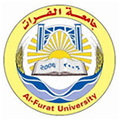آخر الأخبار
مسح حقلي للنيماتودا المتطفلة على العدس في شمال شرق سورية
2013, Volume 8, issue 32,pp 195-209| Cite as
A Field Field Survey For Lentil Parasitic Nematodes In North Eastern of Syria
| authors |
Elias Ishak, Mohammad Farhan Ismail, Aboud El homadah |
| Abstract |
A field survey for Parasitic and Nonparasitic Nematodes Associated with Lentil was conducted in El Hasakah province at the Amouda, kamishly, Kahtania, Jawadiah and Malchiah Regions with objective to determine their importance during 2011. 75 villages are surveyed and comprised 200 lentil fields, from wich Vermiform and cyst nematodes were extracted from soil; roots were also examined to determine the Endo and Semi-Endoparasitic nematodes. Results showed that Heterodera ciceri was the most encountered nematode in lentil soil and plant roots in El_Kamishly followed significantly by Amouda and El Malekiah in 68.67%, 64.38% and 50.00% with contarnination rate reached to 1.33, 1.50 and 1.60 cyst/100 gr roots & soil, respectively. Also, the occurrence and contarnination rates of H. ciceri in the rainfed fields were significantly higher (54.38% and 1.81 cyst /100 gr roots & soil, respectively) compered to irrigated fields (39.63% and 1.20 cyst/100 gr roots & soil, respectively). Another six nematode genera were Tylenchus, Tylenchorhynchus and Ditylenchus were found in the most irrigated fields. They are found to be associated with 97.83%, 68.48%, 97.83%, 78.27%, 97.83% and 97.83% of soil samples, respectively. The contamination with root Lesion nematode Pratylenchus sp. in non irrigated fields were significantly higher (69.65 juvenile/100 cm3 soil) compared to another nematodes genus at both irrigated and rainfed fields. As well as, the Pralylenchus, Aphelenchus and Tylenchorhynchus nematodes. were highly distributed at all studied regions and ranged between 60.00% to 99.00%. At the El_Jawadiah region there were higher contamination with Root- Lesion nematod Pratylenchus sp. reached to 105.89 juvenile/100cm3 soil compared to other studied regions. The higher nematodes distribution were found at irrigated fields of El_kahtaniah region followed by El_Jawadiah rainfed fields with percentage of 78.27% and 73.38%, respectively. Also, Results showed that there were four free- living nematodes genera Rhabditis, Dorylaimus, Acrobeles and Cephalobus were associated with the same nematode genera, with percentage of occurrence and contamination rates |
| الكاتب |
الياس اسحاق , محمد فرحان اسماعيل , عبود الحمادة |
| الملخص |
نفذ مسح حظي في محافظة الحسكة بهدف التعرف على أهمية النيماتودا المتطفلة والحرة المرافقة المحصول العدس في مناطق عامودا، القامشلي، القحطانية، الجوادية والمالكية خلال العام 2011، شمل المسح حوصلة 100غ ترية وجذور، على التوالي، كما وجدت بنسبة ومعدل تلوث أعلى معنوية فيالمناطق البعلية (1.81,%54.38 مقارنة مع المناطق المروية (%39.63و1.20احوصلة/100غ تربة وجذور). كما بينت النتائج انتشار أجناس النيماتودا Prahylenchus كما وجدت أربعة أجناس من النيماتودا الحرة في الحقول المشمولة بالدراسة وهي: Dory airplus ، roheles Cephalobus ودقات Righcd بنسبة بلغت%50.00و%45.00,%55.00,%35.00 ومعدل تلوث بلغ 110.11,74.36,30.29,59.62 الكلمات المفتاحية: مسح حقلي، نيماتودا، عدس، شمال شرق، سورية. |














